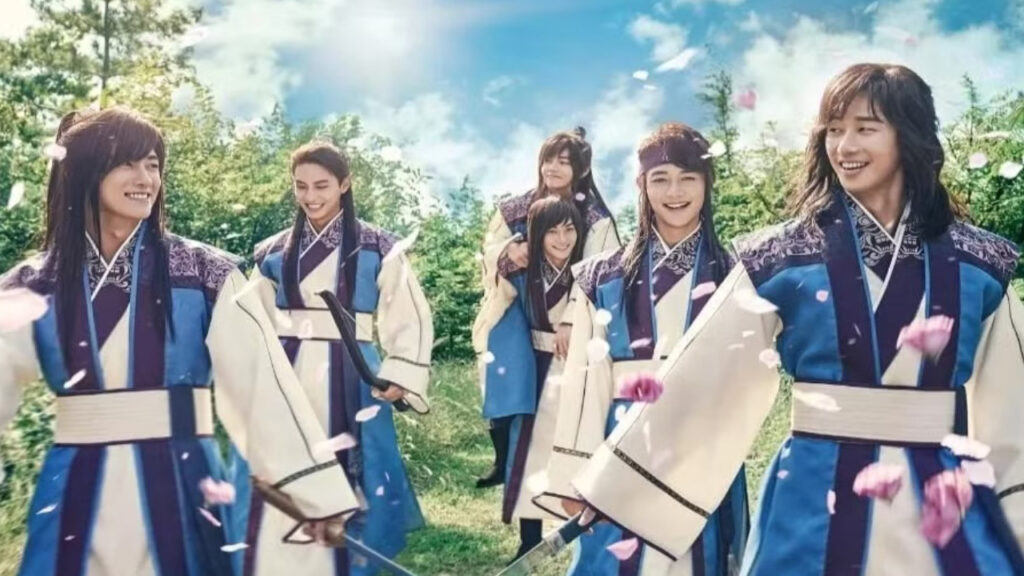
Hwarang Full Review: Is This K-Drama Worth Watching? A Detailed Breakdown
If you’ve ever wondered whether Hwarang is more than just a pretty cast in fancy hanboks, you’re not alone. This 2016 historical K-drama has sparked divided opinions for years—some praise its powerful friendships and breathtaking visuals, while others question its storytelling depth. That’s exactly why this Hwarang Full Review exists: to give you a clear, no-fluff breakdown of what this drama truly offers and whether it’s worth adding to your watchlist in 2025.
Whether you’re a K-drama newbie or a seasoned fan looking for something refreshing yet meaningful, this review will help you decide if Hwarang aligns with your tastes—and your time. Get ready for a detailed, spoiler-free journey through its plot, cast, themes, OST, and more. Let’s uncover what really lies beneath the flower boy surface.
Table of Contents
TogglePlot Summary Without Spoilers:
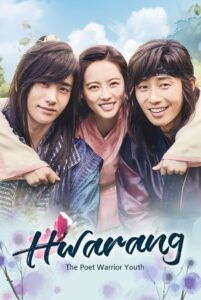 Set during the tumultuous Silla Dynasty, Hwarang follows the formation of an elite group of young male warriors known as the “Hwarang” (meaning “Flowering Knights”). These men are handpicked from noble families to serve the future king and bring unity to a kingdom plagued by political instability, class conflict, and secret agendas.
Set during the tumultuous Silla Dynasty, Hwarang follows the formation of an elite group of young male warriors known as the “Hwarang” (meaning “Flowering Knights”). These men are handpicked from noble families to serve the future king and bring unity to a kingdom plagued by political instability, class conflict, and secret agendas.
At the center of the story is Moo-Myung, a low-born young man who enters the Hwarang under a false identity, driven by a desire for justice. Alongside him are crown prince Sam Maek Jong—who hides his true identity for protection—and Ah Ro, a smart, compassionate healer caught between the two. As friendships form, rivalries spark, and truths unravel, each character is forced to confront who they really are and what they stand for.
With a perfect blend of bromance, hidden identities, political tension, and romance, Hwarang offers a coming-of-age journey set against a vibrant historical backdrop—making it much more than just another Sageuk.
Star-Studded Cast: Why the Line-Up Matters
One of the biggest draws of Hwarang is its dazzling ensemble cast—a rare blend of established actors and rising idols that instantly grabs attention. The drama doesn’t just rely on star power for buzz; it uses each actor’s unique charisma to bring the characters to life, creating a dynamic, emotionally engaging experience for viewers.
Main Cast Highlights:
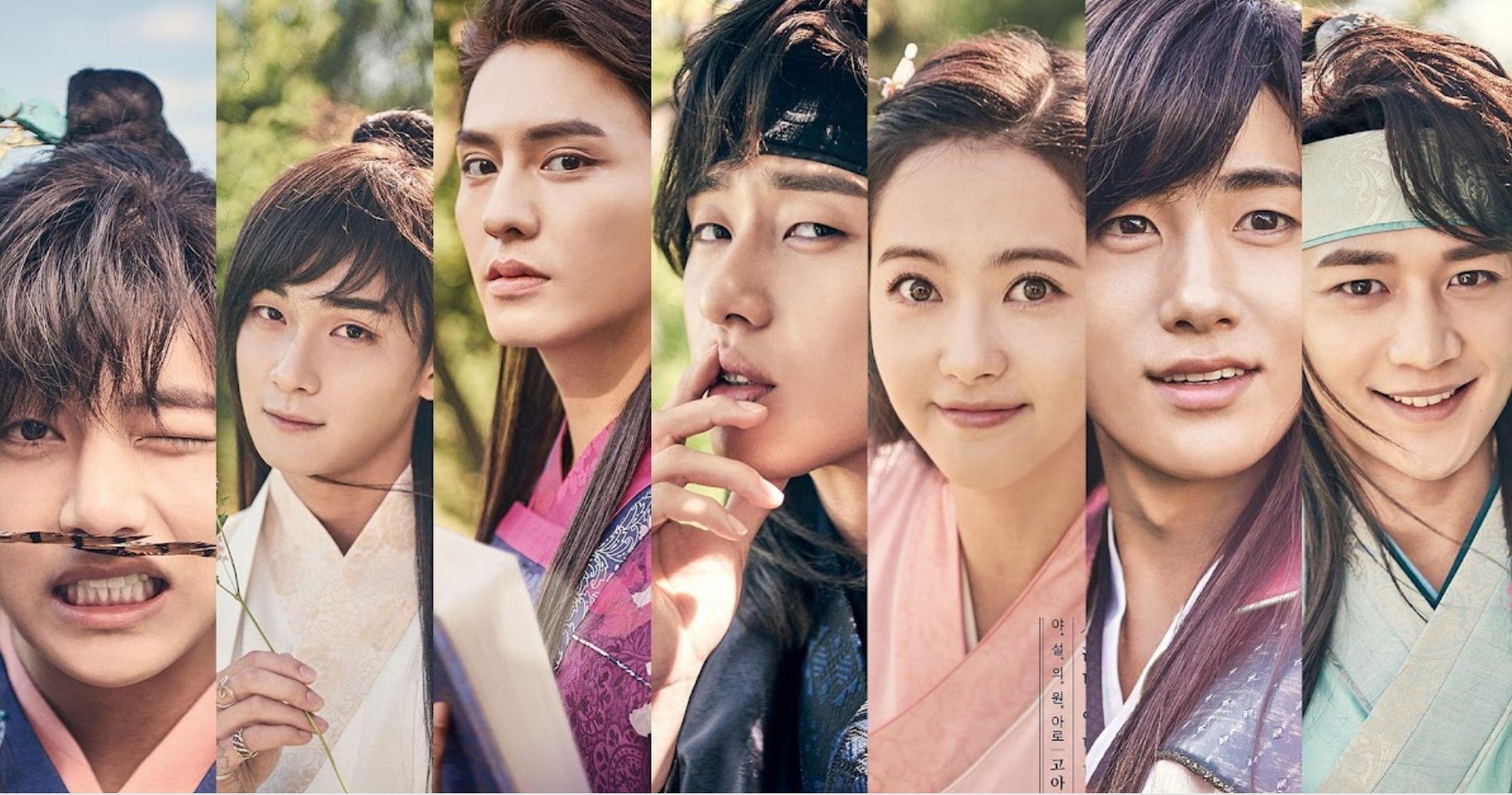
- Park Seo-Joon as Moo-Myung / Sun Woo
A mysterious outsider with a fierce sense of justice and a hidden past, Park Seo-Joon delivers both physical intensity and emotional vulnerability in one of his most layered roles. - Go Ara as Ah Ro
Smart, outspoken, and emotionally grounded, Go Ara’s portrayal of a half-noble healer provides a strong female lead who balances the drama’s heavy themes with warmth and wit. - Park Hyung-Sik as Sam Maek Jong / King Jinheung
A royal hiding in plain sight, Park Hyung-Sik impresses with a character arc that evolves from cautious and bitter to brave and self-assured—showcasing his growth as an actor. - Kim Taehyung (V of BTS) as Han Sung
In his acting debut, V charms audiences with his innocence, humor, and unexpected emotional depth. His portrayal of the youngest Hwarang adds a heartwarming layer to the group. - Choi Minho, Do Ji-Han, and Jo Yoon-Woo round out the brotherhood with distinct personalities, offering a mix of humor, rivalry, and camaraderie that gives the drama its pulse.
Why It Matters:
This lineup isn’t just for visual appeal—each actor brings authenticity to their role, making the viewer invest emotionally in their journey. The chemistry between the cast members, especially during training scenes and emotional confrontations, elevates Hwarang from a typical historical drama to an ensemble-driven story of growth, loyalty, and identity.
Historical Accuracy vs. Dramatic Fiction
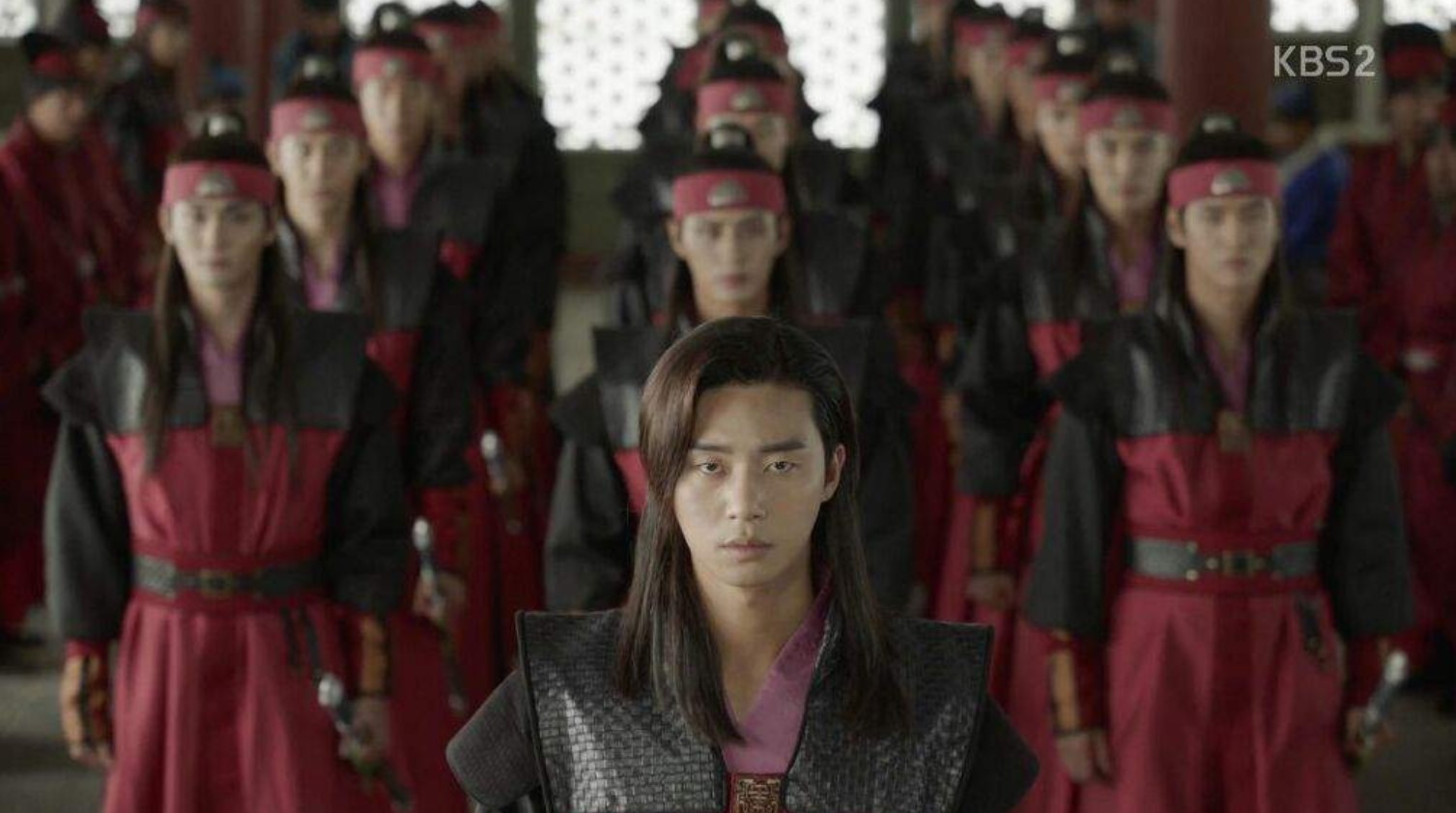 While Hwarang is set during the Silla Dynasty—one of Korea’s ancient kingdoms—it takes creative liberties that blend real historical elements with fictional storytelling. This mix offers a visually captivating and emotionally charged experience but can be misleading for viewers expecting a strictly accurate Sageuk (historical drama).
While Hwarang is set during the Silla Dynasty—one of Korea’s ancient kingdoms—it takes creative liberties that blend real historical elements with fictional storytelling. This mix offers a visually captivating and emotionally charged experience but can be misleading for viewers expecting a strictly accurate Sageuk (historical drama).
What’s Historically True?
- The Hwarang Were Real:
The Hwarang were indeed an elite group of male youth in Silla, trained in martial arts, literature, ethics, and leadership. They played significant roles in unifying the Three Kingdoms of Korea. - King Jinheung Existed:
Sam Maek Jong (later King Jinheung) was a real historical figure. He was one of Silla’s most powerful rulers, known for his military expansion and promotion of the Hwarang system. - Political Struggles in Silla:
The era was marked by power battles among noble families (bone rank system), which the drama touches on, especially in the hidden identity of the king.
Where Fiction Takes Over

- Romantic Subplots:
There’s no historical record of the love triangle or Ah Ro’s character, who is entirely fictional. These elements are designed to add emotional depth and viewer engagement. - Character Arcs & Relationships:
The tight-knit friendships, betrayals, and drama among the Hwarang members are dramatized. Historical Hwarang likely had strict discipline and structure, unlike the more rebellious portrayal here. - Timelines & Events:
The drama compresses and reimagines events for storytelling. For instance, the king’s delayed coronation and his secret identity are used to build suspense, but not fully supported by historical texts.
Why It Works
Even with its historical gaps, Hwarang uses its setting as a thematic backdrop rather than a textbook reenactment. It focuses on youth navigating leadership, identity, and belonging—universal themes that resonate regardless of historical accuracy.
Themes and Life Lessons: What You Can Learn
Beyond its royal secrets and sword fights, Hwarang dives deep into themes that are surprisingly relevant to modern viewers. At its heart, the drama is a coming-of-age story wrapped in historical robes—one that explores friendship, identity, leadership, and the courage to stand up for what’s right. These universal themes give Hwarang its emotional impact and long-lasting appeal.

Key Themes and Lessons:
Finding Your True Identity
Many characters in Hwarang struggle with who they are versus who they’re expected to be—especially Moo-Myung and Sam Maek Jong. The drama teaches that discovering your own voice, even in a society full of rigid rules, is one of life’s greatest triumphs.
The Power of Brotherhood and Loyalty
The emotional core of Hwarang lies in its strong male friendships. Despite class differences, rivalries, and hidden truths, the Hwarang members grow to trust and support each other. It’s a reminder that real strength often comes from unity and understanding.
Standing Up Against Injustice
From corrupt nobles to oppressive systems, the characters are constantly pushed to challenge what’s wrong. Whether it’s speaking truth to power or protecting the weak, the drama encourages viewers to be brave—even when the cost is high.
Love in the Midst of Chaos
Romantic love is also explored, particularly how love can both heal and complicate personal duty. The relationships remind us that love is never easy—but when it’s honest, it can be a powerful motivator for growth.
Leadership Is Earned, Not Inherited
Through the character of Sam Maek Jong, Hwarang shows that true leadership isn’t about bloodlines or titles, but about earning the respect of others, making difficult choices, and putting people before power.
Direction, Production & Visuals
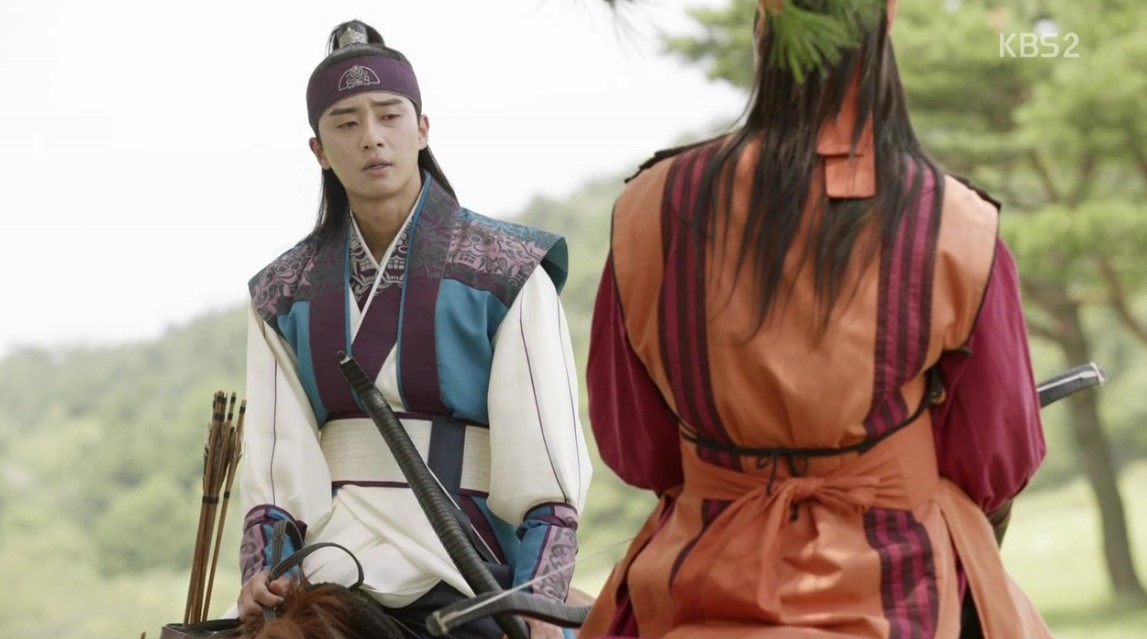 When it comes to visual storytelling, Hwarang doesn’t hold back. The drama is a feast for the eyes, thanks to its vivid cinematography, thoughtful direction, and elegant costume design. Even if you’re not usually drawn to historical K-dramas, Hwarang’s aesthetic charm might win you over.
When it comes to visual storytelling, Hwarang doesn’t hold back. The drama is a feast for the eyes, thanks to its vivid cinematography, thoughtful direction, and elegant costume design. Even if you’re not usually drawn to historical K-dramas, Hwarang’s aesthetic charm might win you over.
Direction by Yoon Sung-sik
- Known for his work on Bridal Mask and You’re the Best, Lee Soon-shin, director Yoon Sung-sik masterfully blends high-stakes politics with tender, emotional moments.
- He brings balance to a multi-character story, ensuring each arc gets the attention it deserves.
- His pacing occasionally stumbles in the latter episodes, but the character growth and emotional beats remain consistent.
Cinematography & Scene Composition
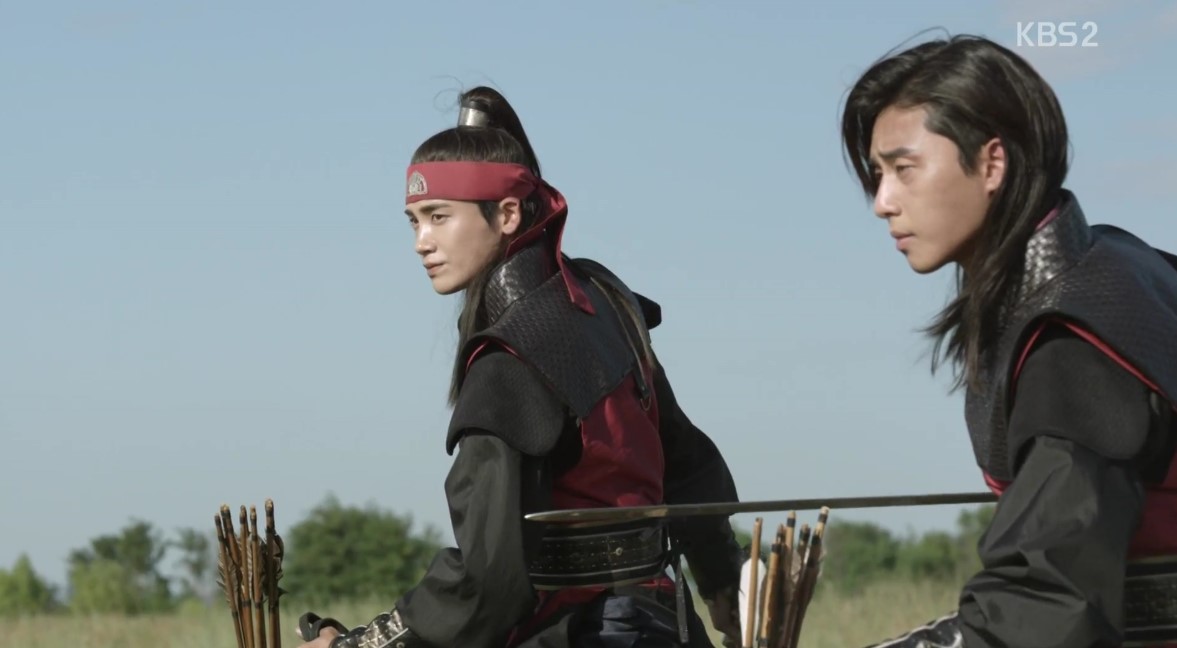
- Wide-angle shots of palaces, battlefields, and training grounds give a cinematic scale to the narrative.
- Use of natural lighting and vibrant color grading enhances both action and emotional sequences.
- Symbolism in the framing—like the use of mirrors, doorways, and diagonals—adds a layer of depth for attentive viewers.
Costumes & Styling

- Each Hwarang member has a distinct style reflecting his background and personality.
- The hanboks and armor pieces are rich in detail but slightly modernized for a youthful, stylized effect.
- Hair and makeup, especially for V and Hyung-Sik, blend traditional and trendy aesthetics to attract a younger audience.
Fight Choreography

- Sword fights are well-timed and choreographed, leaning more toward drama than realism—but they’re exciting and emotionally charged.
- Training sequences are energetic, often used as moments of bonding or character development.
Filming Locations & Set Design
- Lush countryside scenes, temple courtyards, and ancient-style palaces enhance immersion.
- Real-world locations in Korea, such as the Silla Millennium Park, add authenticity to the fictionalized history.
Soundtrack That Stays With You
One of the most unforgettable parts of Hwarang is its soundtrack—a blend of heart, harmony, and pure emotion that stays with you long after the credits roll. Each track feels like it was carefully crafted to echo the characters’ personal struggles, friendships, and quiet moments of growth. Whether it’s a romantic scene, a moment of sorrow, or a burst of youthful energy, the OST steps in not just as background noise, but as a powerful storytelling tool.
And let’s not ignore the star factor—the OST features some of the biggest names in K-pop, which only adds to its charm.
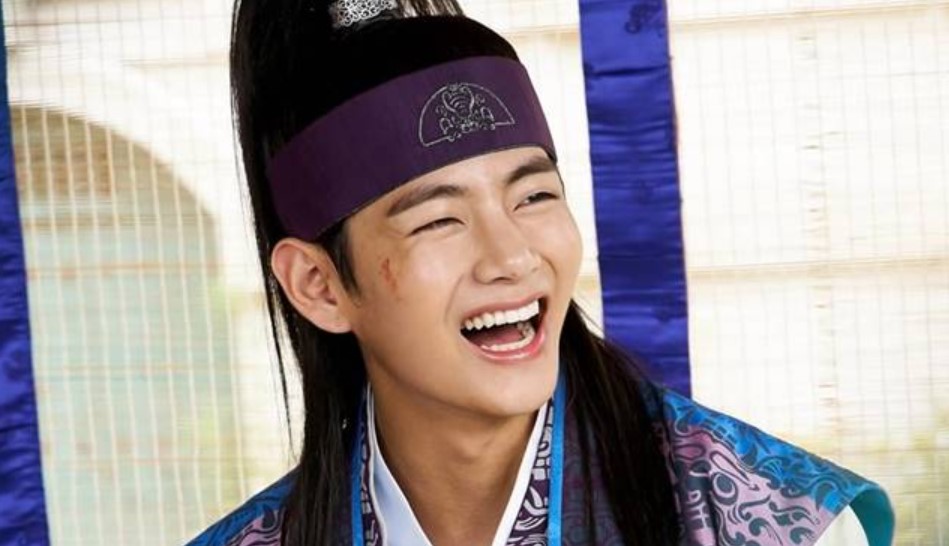 You’ll instantly recognize “Even If I Die, It’s You” by V and Jin of BTS—an upbeat, emotionally charged anthem that perfectly captures the spirit of friendship and bravery that runs through the heart of Hwarang. It’s a track that almost feels like the unofficial theme of the group, filled with youthful fire and loyalty.
You’ll instantly recognize “Even If I Die, It’s You” by V and Jin of BTS—an upbeat, emotionally charged anthem that perfectly captures the spirit of friendship and bravery that runs through the heart of Hwarang. It’s a track that almost feels like the unofficial theme of the group, filled with youthful fire and loyalty.
Then there’s “Wherever You Are” by Han Dong Geun, a beautifully emotional ballad that plays during some of the most heartfelt scenes. It’s the kind of song that stirs something deep inside you, especially when it plays softly behind a silent goodbye or a longing gaze.
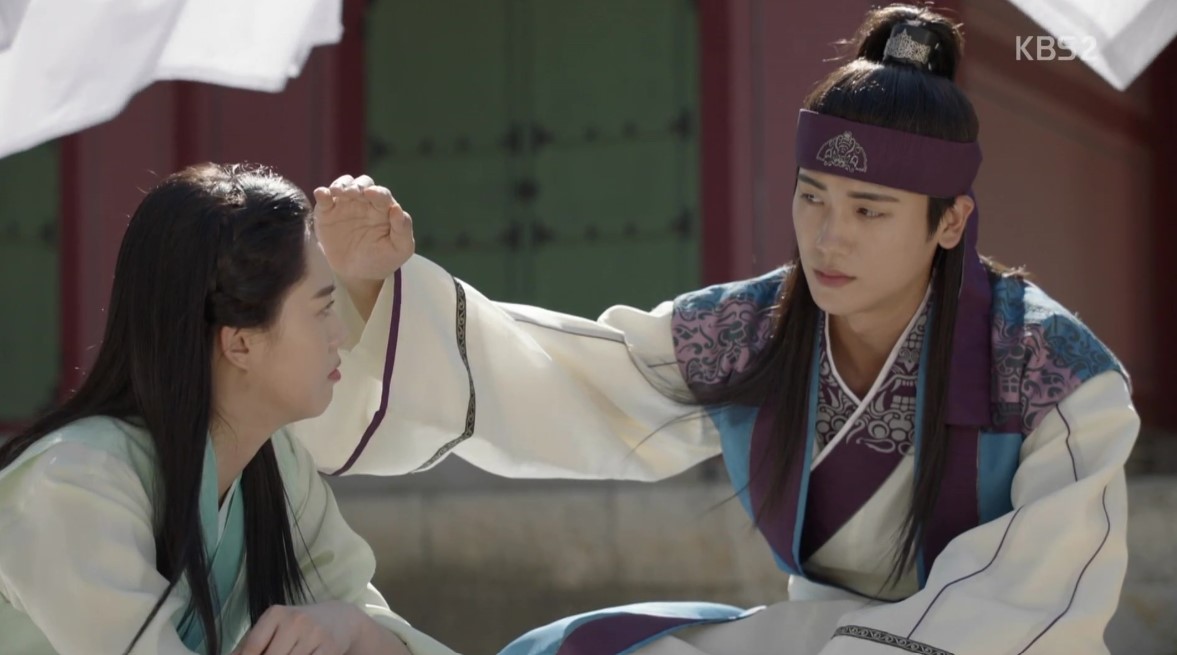 We also get a rare treat with Park Hyung-Sik himself lending his voice to “Our Tears”, delivering an honest and soul-touching performance that mirrors his character’s inner turmoil and quiet strength. Similarly, Park Seo-Joon’s “I’ll Be Here” adds another personal layer—when a lead actor sings, it makes the moment feel even more intimate.
We also get a rare treat with Park Hyung-Sik himself lending his voice to “Our Tears”, delivering an honest and soul-touching performance that mirrors his character’s inner turmoil and quiet strength. Similarly, Park Seo-Joon’s “I’ll Be Here” adds another personal layer—when a lead actor sings, it makes the moment feel even more intimate.
Bolbbalgan4’s “Dream” brings a lighter, softer energy—ideal for those cute, fluttery moments that balance out the drama’s intensity. And Hyorin’s “You’re One” adds emotional weight with her signature powerhouse vocals, echoing themes of love, longing, and destiny.
This soundtrack isn’t just made to support the story—it’s made to be remembered.
Strengths and Weaknesses: An Honest Breakdown
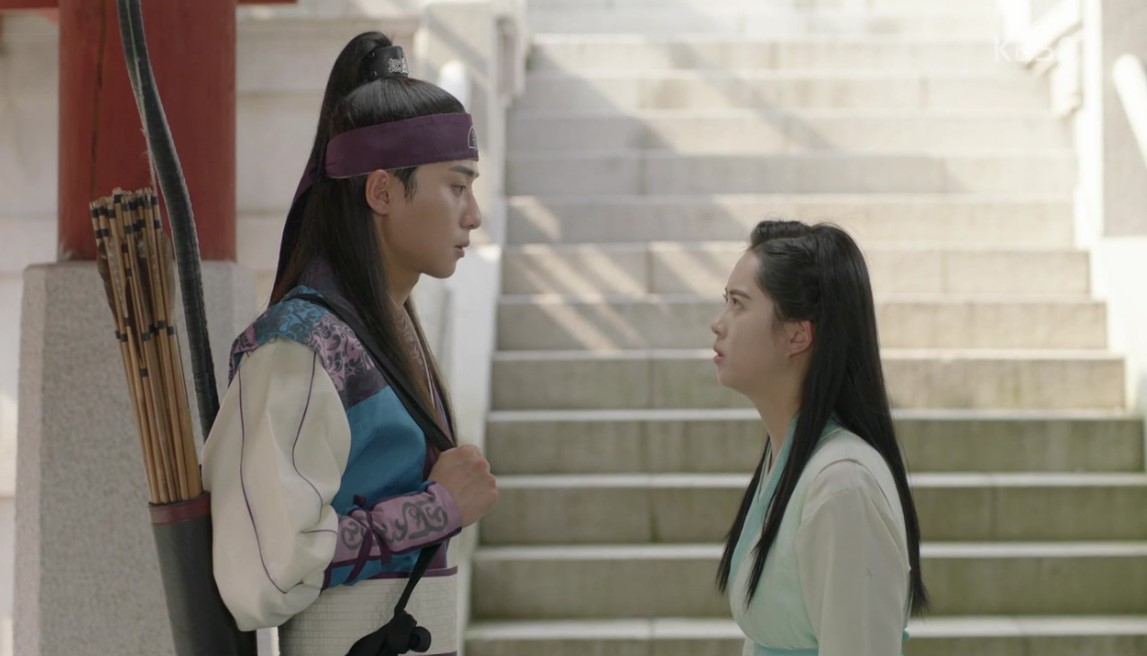 Every drama has its highs and lows, and Hwarang is no exception. While it’s a visually stunning, emotionally rich experience that won many hearts, it also faced fair criticism for its pacing and plot execution. If you’re still wondering whether this drama is for you, here’s a balanced breakdown to help you decide.
Every drama has its highs and lows, and Hwarang is no exception. While it’s a visually stunning, emotionally rich experience that won many hearts, it also faced fair criticism for its pacing and plot execution. If you’re still wondering whether this drama is for you, here’s a balanced breakdown to help you decide.
Strengths
1. Star Power & Chemistry
The cast is one of Hwarang’s biggest assets. With Park Seo-Joon, Park Hyung-Sik, and BTS’s V on screen together, the natural chemistry among the characters adds depth to their friendships and rivalries. Each actor brings something unique, making the ensemble feel believable and endearing.
2. Memorable OST
The soundtrack is nothing short of iconic. Tracks like “Even If I Die, It’s You” and “Our Tears” don’t just complement the drama—they define it. The music lingers long after the story ends, drawing you back emotionally to key scenes.
3. Emotionally Charged Character Arcs
From Moo-Myung’s painful search for identity to Sam Maek Jong’s struggle between duty and freedom, Hwarang doesn’t shy away from emotional storytelling. The growth of the characters feels earned, and their personal battles are relatable, even in a historical setting.
4. Beautiful Production Design
The cinematography, costume design, and locations make Hwarang a visual treat. The traditional Korean architecture, colorful hanboks, and scenic nature shots keep your eyes glued to the screen.
5. Universal Themes
Despite being set in ancient Silla, Hwarang explores timeless themes—identity, courage, love, friendship, and leadership—that resonate with audiences today.
Weaknesses
1. Slow Pacing in the Middle
One of the most common complaints is the slow or inconsistent pacing, especially around episodes 6 to 12. The plot sometimes drags, focusing more on romantic tension than progressing the main story.
2. Underdeveloped Political Plot
The power struggles and political schemes lack depth at times. There’s potential for high-stakes tension, but the narrative doesn’t fully explore these threads, leaving them feeling half-baked.
3. Too Many Characters, Not Enough Development
While the cast is diverse, not every Hwarang member gets the spotlight they deserve. Some characters feel like background decoration, which is a missed opportunity considering the talent on hand.
4. Repetitive Conflicts
Certain emotional beats—especially romantic misunderstandings—are revisited multiple times without much progress, which can feel frustrating and cliché.
5. Historical Inaccuracy
For viewers expecting a true-to-history drama, Hwarang takes a lot of creative liberties. If you’re a Sageuk purist, this may not be your cup of tea.
Final Verdict: Is Hwarang Worth Watching in 2025?
 After diving deep into everything Hwarang offers—from its compelling cast and emotional themes to its stunning visuals and memorable soundtrack—the big question remains: Is this K-drama still worth your time in 2025?
After diving deep into everything Hwarang offers—from its compelling cast and emotional themes to its stunning visuals and memorable soundtrack—the big question remains: Is this K-drama still worth your time in 2025?
The answer is a thoughtful yes, especially if you appreciate character-driven stories about friendship, identity, and personal growth wrapped in a historical setting. Hwarang may not satisfy those craving intense political intrigue or strict historical accuracy, but it excels at delivering heartfelt moments, youthful energy, and strong chemistry between its leads.
 Thanks to its star-studded cast—including BTS’s V and rising actors like Park Seo-Joon and Park Hyung-Sik—Hwarang continues to attract new viewers, bridging K-pop fandom and Sageuk drama lovers alike. Plus, the OST remains a highlight that keeps fans emotionally connected.
Thanks to its star-studded cast—including BTS’s V and rising actors like Park Seo-Joon and Park Hyung-Sik—Hwarang continues to attract new viewers, bridging K-pop fandom and Sageuk drama lovers alike. Plus, the OST remains a highlight that keeps fans emotionally connected.
If you enjoy dramas that mix bromance, romance, and coming-of-age struggles with beautiful production design, Hwarang is definitely worth watching—even years after its original release.
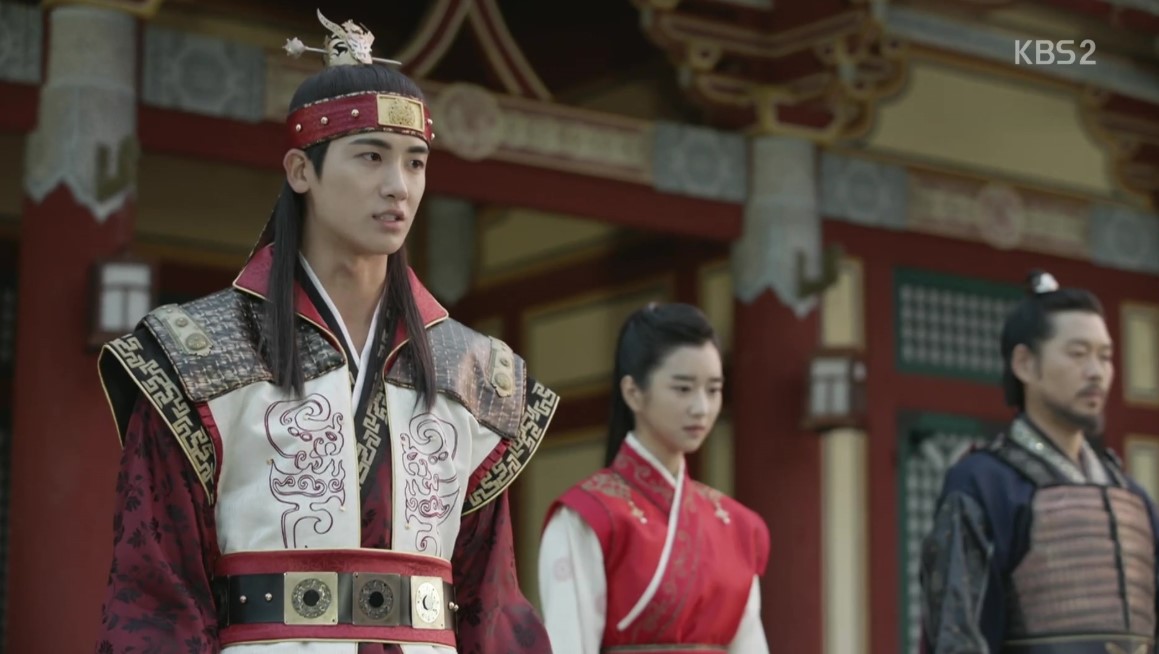 Hwarang is more than just a historical drama—it’s a vibrant coming-of-age story that weaves friendship, love, and personal growth into the rich tapestry of Korea’s Silla Dynasty. While it takes creative liberties with history and sometimes falters in pacing, its strong cast, emotional depth, and unforgettable soundtrack make it a rewarding watch for many viewers.
Hwarang is more than just a historical drama—it’s a vibrant coming-of-age story that weaves friendship, love, and personal growth into the rich tapestry of Korea’s Silla Dynasty. While it takes creative liberties with history and sometimes falters in pacing, its strong cast, emotional depth, and unforgettable soundtrack make it a rewarding watch for many viewers.
Whether you’re a longtime K-drama fan or new to the genre, Hwarang offers valuable life lessons about identity, loyalty, and courage that still resonate today. If you’re looking for a drama that balances youthful energy with meaningful storytelling, Hwarang deserves a place on your watchlist.
So, are you ready to join the brotherhood and uncover the secrets behind the Flower Knights? Dive in and experience the journey for yourself!
Frequently Asked Questions (FAQs)
1. What is Hwarang about?
Hwarang is a historical K-drama set in the Silla Dynasty that follows a group of elite young warriors called the Hwarang. It blends themes of friendship, identity, love, and political intrigue as these youths navigate their personal struggles and royal duties.
2. Is Hwarang based on true history?
While Hwarang features real historical figures and the existence of the Hwarang warriors, much of its story and characters are fictionalized for dramatic effect. It focuses more on personal growth and relationships than strict historical accuracy.
3. Who are the main actors in Hwarang?
The drama stars Park Seo-Joon, Go Ara, Park Hyung-Sik, and BTS’s V (Kim Taehyung), among others. This star-studded cast brings strong chemistry and emotional depth to the story, appealing to both K-drama and K-pop fans.
4. Is Hwarang suitable for K-drama beginners?
Yes! Hwarang is beginner-friendly with an engaging mix of action, romance, and friendship. Its modern storytelling style and youthful cast make it accessible even if you’re new to historical dramas.
5. What makes the Hwarang soundtrack special?
The soundtrack features emotional ballads and upbeat tracks performed by popular artists like BTS’s V and Jin, as well as cast members Park Hyung-Sik and Park Seo-Joon. The music enhances the drama’s emotional moments and is memorable on its own.
6. Where can I watch Hwarang with subtitles?
Hwarang is available on major streaming platforms like Netflix, Viki, and Amazon Prime, often with multiple subtitle options. Check your region’s availability and choose HD for the best viewing experience.
7. Does Hwarang have a satisfying ending?
Opinions vary—some viewers find the ending emotional and fitting, while others feel certain storylines could have been wrapped up better. Overall, the conclusion stays true to the drama’s themes of growth and friendship.
8. What are the biggest strengths and weaknesses of Hwarang?
Hwarang shines with its talented cast, beautiful visuals, and heartfelt soundtrack. However, it faces criticism for slower pacing in parts and less focus on historical politics, so viewers seeking fast-paced political intrigue may find it lacking.
